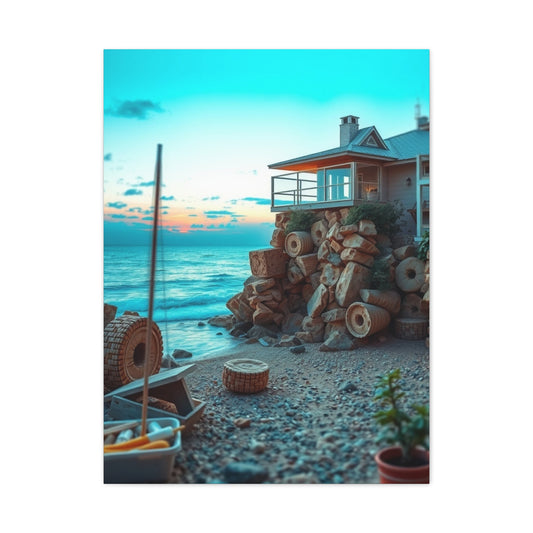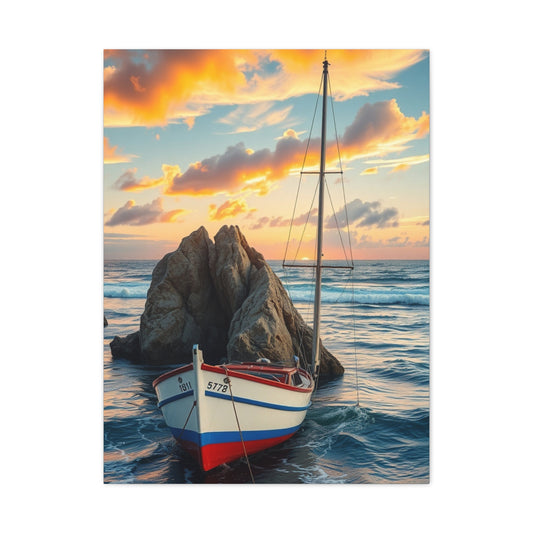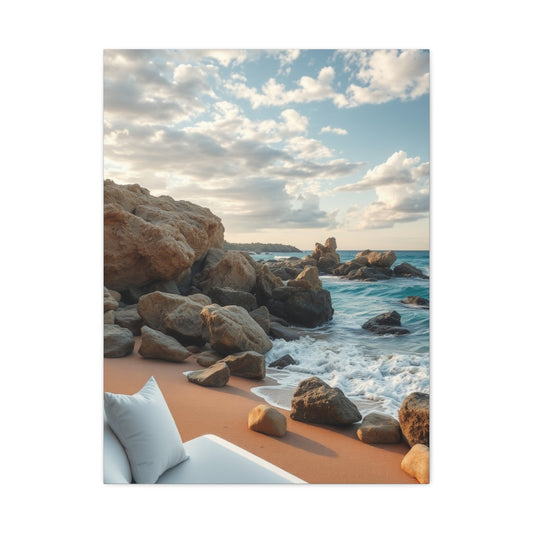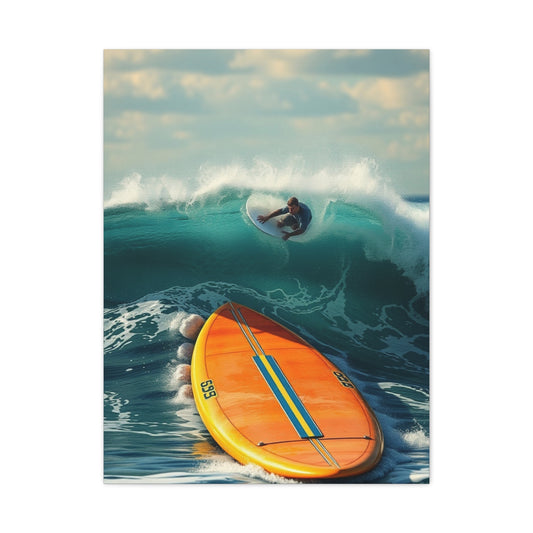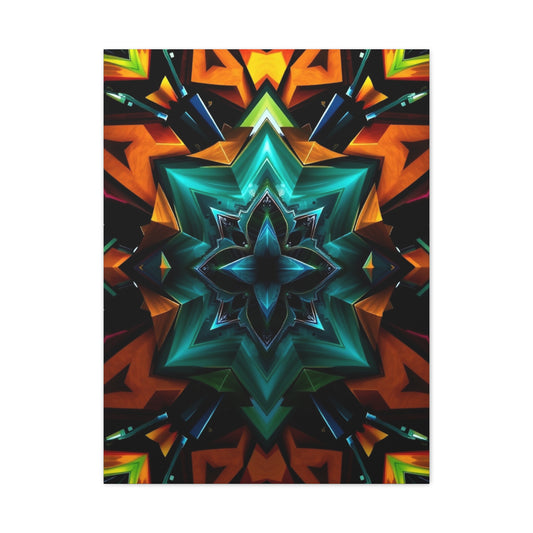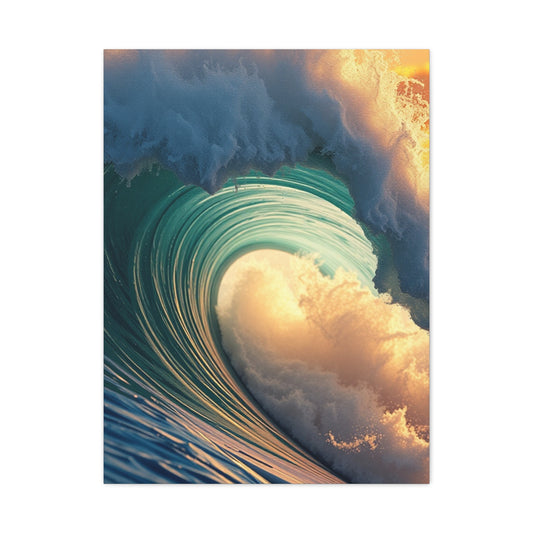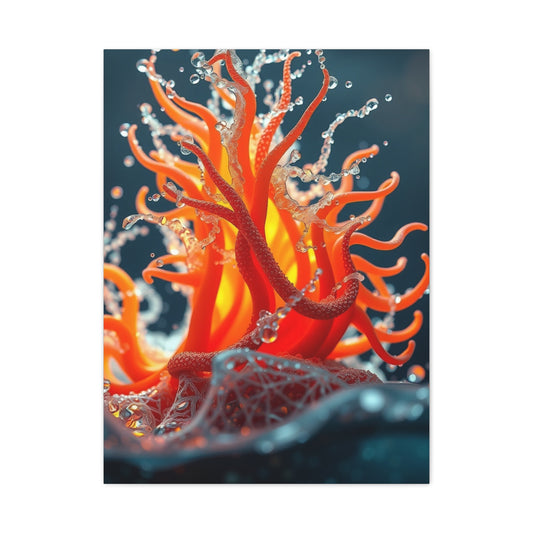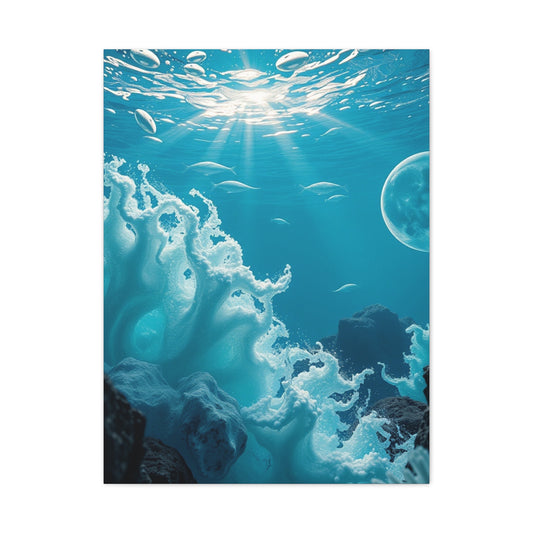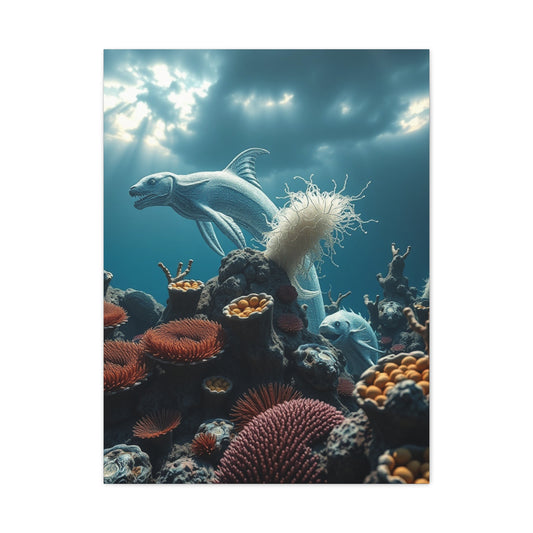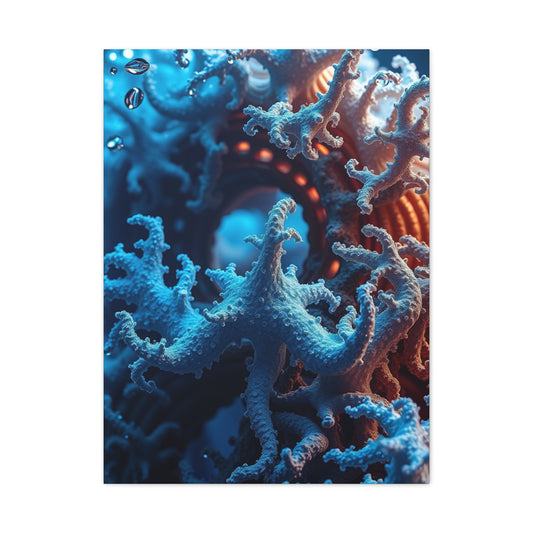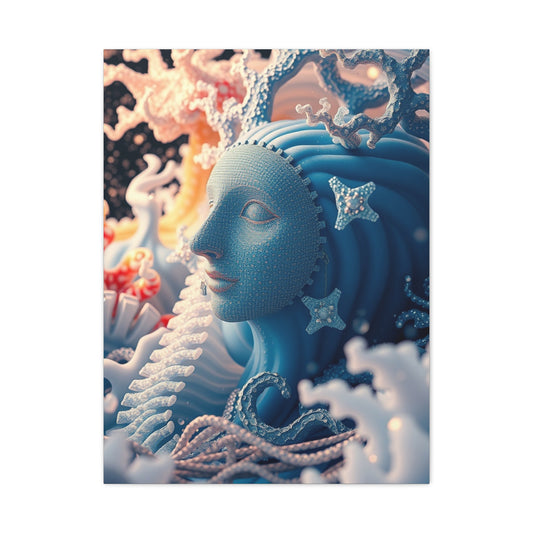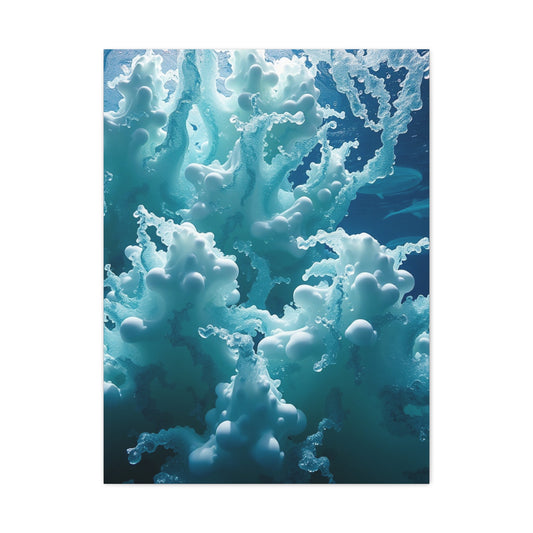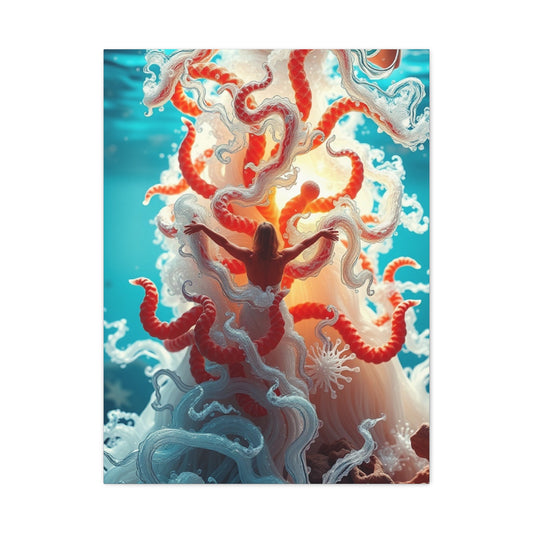Bathroom Art Inspiration: Creative Ways to Transform Your Space with Abstract Bathroom Wall Art
The transformative power of artwork is not confined merely to grand living rooms, sprawling hallways, or cozy bedrooms; it permeates every space within a home, influencing mood, atmosphere, and personal identity. Often neglected in this regard is the bathroom—a space traditionally viewed as purely functional, a room dedicated solely to hygiene and utility. However, this perception overlooks the potential for the bathroom to serve as a sanctuary of calm, introspection, and creative expression. By incorporating thoughtfully chosen artwork into the bathroom, one can radically reimagine this space, elevating it from a simple washroom to a tranquil retreat that nourishes both the body and the mind.
Bathrooms are intimate environments where individuals begin and end their days. They are places of routine, but also moments of pause, self-care, and renewal. The presence of carefully curated art within this setting can profoundly influence these daily rituals, turning them into sensory experiences that soothe and inspire. For example, a serene landscape or a subtle abstract composition can evoke a sense of calm, helping to reduce stress as one prepares for the day ahead or unwinds at night. Alternatively, vibrant, colorful pieces might invigorate the space, injecting energy and optimism into morning routines. The emotional resonance of artwork in the bathroom enhances not only the visual appeal but also the psychological atmosphere, making everyday moments more meaningful.
The aesthetic possibilities for bathroom art are vast and varied, reflecting a wide spectrum of personal tastes and design philosophies. From minimalist black-and-white photographs to lush botanical illustrations, from avant-garde abstracts to classic still lifes, the right piece can serve as a focal point, conversation starter, or quiet complement to the room’s overall design scheme. Beyond mere decoration, art in the bathroom becomes a form of personal storytelling, a reflection of the homeowner’s values, interests, and creativity. It is a chance to inject personality into a space often overlooked when planning home decor.
Moreover, the practical aspects of selecting bathroom artwork have evolved significantly with advances in materials and framing techniques. Modern artists and designers create pieces specifically for moisture-rich environments, using water-resistant prints, sealed canvases, and rust-proof framing. This means there is no longer a need to avoid placing cherished art in the bathroom out of fear of damage. Instead, homeowners can confidently select works that suit their stylistic preferences without compromising longevity or maintenance.
In addition to traditional framed art, other creative forms such as wall decals, ceramic tiles, and digital art displays provide alternative ways to personalize bathrooms. These options offer flexibility in style and installation, allowing for both temporary and permanent expressions of artistic flair. Interactive digital frames, for example, can rotate through a gallery of images, adapting the ambiance to the time of day or mood desired.
The integration of art into the bathroom also aligns with broader trends in interior design that emphasize holistic living environments. As people increasingly seek to create homes that promote well-being and mindfulness, every space is reconsidered as a potential haven of beauty and comfort. Bathrooms, once relegated to purely utilitarian roles, are now embraced as essential components of wellness-centered living spaces. Art contributes significantly to this shift by providing visual stimulation, emotional uplift, and a sense of sanctuary.
Ultimately, incorporating artwork into the bathroom enriches the everyday experience in profound ways. It bridges the gap between function and feeling, transforming a room of routine tasks into a space of artistic engagement and personal rejuvenation. Whether through evocative imagery, harmonious color schemes, or tactile textures, bathroom art invites us to appreciate beauty in the most private corners of our homes. By doing so, it redefines what it means to live creatively and thoughtfully within our environments, enhancing our connection to the spaces that support and sustain us daily.
Reimagining Your Bathroom Through Artistic Expression
The contemporary bathroom has undergone a remarkable transformation, shifting far beyond its original role as a mere functional chamber dedicated to hygiene. Today, it stands as a personal sanctuary—an intimate retreat where the practical necessities of daily life converge with the pursuit of beauty, relaxation, and emotional nourishment. This profound evolution reflects a growing recognition that bathrooms, often overlooked in interior design, possess immense potential to be curated spaces of artistic expression and psychological well-being.
At the heart of this reimagining is the deliberate integration of thoughtfully chosen artwork. No longer confined to living rooms, bedrooms, or hallways, art has found its place in these private spaces, inviting homeowners to infuse their bathrooms with personal meaning and aesthetic vitality. The presence of art in the bathroom transcends simple decoration; it transforms routine moments such as brushing teeth, showering, or unwinding in a bath into occasions of mindfulness and inspiration. By engaging the senses and the imagination, artwork elevates the bathroom from a functional environment to a space rich with emotional resonance.
Modern interior design philosophies increasingly advocate for a holistic view of living spaces, where every nook and cranny offers an opportunity for beauty, reflection, and emotional connection. This approach challenges longstanding conventions that relegated certain rooms—particularly bathrooms—to purely utilitarian roles, devoid of artistic consideration. Instead, it encourages homeowners to view their entire home as a cohesive canvas, where visual storytelling and creative vision extend seamlessly from room to room. The bathroom, with its intimate and often private nature, emerges as a uniquely receptive space for such artistic intervention.
The psychological benefits of surrounding oneself with visually compelling and personally meaningful art are profound. When we begin our mornings and end our evenings enveloped in environments that echo our tastes and values, we create a sense of continuity and harmony throughout our daily experiences. This continuity fosters emotional equilibrium and mental clarity, supporting a balanced state of mind that can ripple into other aspects of life. The bathroom, as a setting for self-care rituals, is especially suited to benefit from this holistic aesthetic approach, as it is often a place of vulnerability and introspection.
In addition to mood enhancement, the incorporation of artwork in the bathroom can also stimulate creativity and personal reflection. Visual stimuli that resonate deeply can inspire new ideas, memories, or perspectives, turning a moment as simple as washing one’s hands into a subtle but meaningful act of artistic engagement. This interplay between function and creativity exemplifies the growing trend toward designing living spaces that nurture not only the physical but also the emotional and intellectual facets of human experience.
Moreover, the choice of artwork for the bathroom need not be constrained by traditional rules. Abstract compositions, serene landscapes, bold graphic prints, or even mixed-media pieces can all find a harmonious place within the bathroom’s unique spatial and atmospheric conditions. Selecting art that complements the room’s color palette, lighting, and architectural features enhances the overall ambiance, creating a visually cohesive and emotionally resonant space. Advances in materials and framing now allow artworks to withstand the humidity and temperature fluctuations typical of bathrooms, making it easier than ever to bring fine art into this environment without fear of damage.
Ultimately, reimagining the bathroom as a space for artistic expression represents a shift toward embracing the full potential of our living environments. It invites us to reconsider where beauty belongs and to recognize that art’s power to uplift, inspire, and soothe can flourish anywhere—even in the most unexpected corners of our homes. By thoughtfully incorporating artwork into bathrooms, we honor the emotional complexity of these spaces and create personal retreats that support holistic well-being and creative vitality.
Strategic Placement Above Bathing Sanctuaries
The area surrounding your bathtub presents an exceptional opportunity for creating a focal point that enhances the bathing experience. This prime real estate on your bathroom walls can accommodate various artistic styles and themes, from serene landscapes that promote relaxation to vibrant abstractions that energize the spirit. The key lies in selecting pieces that complement both the physical dimensions of the space and the emotional atmosphere you wish to cultivate.
When considering artwork for this prominent position, contemplate the psychological effects you desire during your bathing rituals. Peaceful nature scenes featuring cascading waterfalls, misty mountains, or tranquil lakeshores can transform your bath into a meditative escape from daily stressors. These natural elements create an immediate connection to the outdoors, fostering a sense of serenity that enhances the restorative qualities of your bathing routine.
Alternatively, bold contemporary pieces can infuse energy and sophistication into your bathing sanctuary. Abstract compositions featuring dynamic color palettes or geometric patterns stimulate visual interest while maintaining the luxurious ambiance essential to a relaxing bath experience. The interplay between artistic expression and functional design creates a harmonious environment where form and function coexist seamlessly.
Animal portraiture brings warmth and personality to bathing spaces, particularly when featuring creatures that evoke feelings of comfort and companionship. Highland cattle with their endearing expressions, majestic wildlife in their natural habitats, or whimsical domestic animals create conversation pieces that add character to your private retreat. These selections demonstrate how personal taste and artistic appreciation can transform utilitarian spaces into expressions of individual style.
The incorporation of metallic elements through artwork featuring gold, silver, or copper tones adds glamour and sophistication to bathroom environments. These reflective qualities complement the natural lighting found in most bathrooms while creating visual depth that enhances the perceived spaciousness of smaller areas. Such pieces bridge the gap between functional necessity and luxurious indulgence.
Elevating Utility Areas with Artistic Flair
The space above toilets represents one of the most universal opportunities for bathroom art placement, as every bathroom contains this essential fixture regardless of size or layout. This consistent architectural element provides a reliable canvas for artistic expression that can dramatically alter the room's overall aesthetic appeal. The challenge lies in selecting pieces that maintain dignity and sophistication while acknowledging the practical nature of the space.
Humorous artwork can inject personality and levity into these utilitarian areas without compromising taste or elegance. Witty textual pieces, playful animal illustrations, or clever visual puns create moments of joy during routine activities. These selections demonstrate that bathroom art need not be serious or somber to be effective in transforming the space's emotional resonance.
Botanical themes work exceptionally well in bathroom environments due to their natural association with cleanliness, freshness, and renewal. Watercolor floral compositions, detailed plant studies, or tropical foliage create connections to nature that enhance the bathroom's role as a space for personal cleansing and rejuvenation. These organic elements complement the water-centric activities that define bathroom function while adding visual softness to hard surfaces.
Abstract expressionism offers limitless possibilities for personalizing bathroom spaces while maintaining sophisticated aesthetic standards. Color-field paintings, gestural abstractions, or minimalist compositions can complement existing decor while providing focal points that elevate the room's artistic credibility. These selections allow for creative expression that transcends traditional bathroom decoration boundaries.
The strategic use of black and white photography or illustrations creates timeless elegance that adapts to evolving decor trends. Monochromatic pieces possess inherent sophistication that complements various color schemes while providing visual interest through composition, texture, and subject matter rather than relying solely on color impact.
Transforming Hand-Washing Stations Through Visual Appeal
The area designated for hand-washing and towel storage frequently becomes a focal point of bathroom activity, making it an ideal location for artistic intervention. This high-traffic zone benefits from artwork that can withstand frequent viewing while maintaining its ability to inspire and delight. The selection process should consider both the practical aspects of the space and the emotional impact desired from repeated encounters with the chosen pieces.
Urban photography capturing iconic cityscapes, architectural marvels, or street scenes can transport viewers beyond the confines of their private spaces, creating mental journeys that enrich daily routines. These glimpses of distant places or familiar locations imbue mundane activities with wanderlust and adventure, transforming simple hand-washing into moments of escapism and inspiration.
Aquatic themes naturally complement bathroom environments while reinforcing the space's primary function. Ocean waves frozen in photographic or painterly splendor, marine life in their underwater habitats, or abstract interpretations of water's movement create cohesive design narratives that celebrate the element central to bathroom activities. These selections enhance the sensory experience of water-based routines while maintaining thematic consistency.
Wildlife photography and illustrations bring the natural world into intimate spaces, fostering connections with creatures that inhabit environments far removed from urban dwellings. Birds in flight, forest animals in their native habitats, or domestic pets captured in candid moments create emotional bridges between human experiences and the broader natural world, enriching daily routines with appreciation for biodiversity and natural beauty.
Seasonal artwork allows for rotating displays that keep bathroom decor fresh and relevant throughout the year. Spring flowers can herald renewal and growth, summer scenes can evoke vacation memories, autumn foliage can celebrate harvest abundance, and winter landscapes can provide serene contemplation. This approach prevents visual stagnation while maintaining ongoing interest in the bathroom's artistic program.
Enhancing Grooming Areas with Sophisticated Selections
Vanity areas present unique challenges for art placement due to the predominance of mirrors and the need for adequate lighting during grooming activities. However, these constraints also create opportunities for creative solutions that can dramatically enhance the functionality and beauty of these essential spaces. The key lies in working with existing architectural elements rather than against them, finding harmony between practical requirements and aesthetic aspirations.
Figure studies and portraiture can create intimate connections between viewers and their reflection rituals. These human-centered artworks acknowledge the vulnerability and self-examination inherent in grooming activities while providing inspiration for self-acceptance and personal care. The selection of pieces that celebrate human form and expression can transform routine maintenance into acts of self-appreciation and mindfulness.
Decorative arts featuring ornate patterns, luxurious textures, or precious materials can elevate vanity areas into glamorous spaces reminiscent of high-end salons or spa environments. These selections transform utilitarian grooming into indulgent experiences that prioritize self-care and personal luxury, demonstrating that everyday routines deserve beautiful backdrops.
Contemporary abstractions offer flexibility in color coordination while providing visual interest that complements rather than competes with mirror reflections. These pieces can bridge various decor elements while maintaining sophisticated aesthetic standards that enhance the bathroom's overall design coherence. The interplay between abstract art and reflected images creates dynamic visual experiences that evolve with changing light conditions and viewer positions.
Sculptural elements, when space permits, can introduce three-dimensional interest to predominantly flat bathroom surfaces. Small sculptural pieces, wall-mounted reliefs, or mixed-media works add textural variety while maintaining the intimate scale appropriate to bathroom environments. These selections demonstrate how artistic expression can transcend traditional two-dimensional boundaries.
Innovative Approaches to Unconventional Spaces
Modern bathrooms frequently challenge traditional design norms due to their unique layouts, unusual architectural features, and limited spatial dimensions. Far from being obstacles, these distinctive characteristics provide fertile ground for creative and innovative artistic solutions that not only accommodate but also celebrate the idiosyncrasies of the space. Embracing such unconventional bathroom environments opens up exciting opportunities to rethink art placement, turning perceived design limitations into dynamic focal points that enhance the overall atmosphere and personal expression of the room.
One of the most effective ways to transform these irregular spaces is by utilizing corner installations. Corners are often overlooked or awkward transitional areas that can feel disconnected from the room’s flow. However, with thoughtful curation, these architectural quirks become compelling sites for art. Installing sculptures, three-dimensional pieces, or carefully framed artworks that harmonize with the angles can anchor the room’s design narrative. A well-placed corner piece can create a sense of balance and intentionality, drawing the eye and transforming what might otherwise be considered wasted or difficult space into a key visual element. Grouped arrangements—such as clusters of small canvases or a series of coordinated prints—can further enhance these transitions by creating rhythm and movement, weaving the corner naturally into the bathroom’s artistic program.
In bathrooms where horizontal wall space is limited, vertical installations offer a striking solution. Tall, narrow pieces or vertically arranged art groups can maximize visual impact without overwhelming compact walls. These installations not only make efficient use of space but also generate an illusion of height, contributing to a more open and airy feeling within confined settings. Vertical art can serve as elegant punctuation points, adding sophistication and depth to narrow hallways, beside mirrors, or adjacent to shower enclosures. Their elongated form draws the eye upward, subtly expanding the perceived dimensions of the bathroom and reinforcing an overall sense of proportion and balance.
Another compelling strategy for integrating art into unconventional bathrooms is through series installations. Rather than isolated works placed arbitrarily, series installations offer curated collections of related pieces that tell a cohesive story or explore a shared theme. By guiding the viewer’s attention sequentially around the bathroom, these installations create a visual journey that enhances both engagement and narrative depth. Whether focusing on variations of a particular color palette, exploring a conceptual idea, or showcasing different interpretations of a subject matter, series installations elevate bathroom art beyond decorative afterthoughts. They become integral components of the room’s design language, contributing to an immersive experience where art and environment coexist in thoughtful harmony.
Mixed-media approaches provide yet another innovative pathway to navigating the unique challenges of bathroom environments. Bathrooms are subject to moisture, humidity fluctuations, and temperature changes that can damage traditional artworks. By combining various artistic mediums—such as waterproof inks, resin coatings, metal elements, or ceramics—with protective framing and mounting techniques, artists and homeowners can safeguard their creations while enriching the sensory experience. Textural contrasts between smooth, glossy surfaces and tactile, layered materials offer a dynamic visual interplay that enlivens the space. Mixed-media installations also invite experimentation with three-dimensional forms, light reflections, and even interactive elements, allowing bathroom art to transcend static imagery and engage users on multiple sensory levels.
Moreover, innovative art placement in unconventional bathrooms often involves customizing display methods to fit specific spatial and environmental conditions. Floating shelves, recessed niches, and built-in display cases can be thoughtfully designed to house art pieces, blending functionality with artistic presentation. The use of adjustable lighting—such as LED strips or spotlights—can further enhance the visibility and impact of artwork, adapting to the bathroom’s mood and user preferences. These customized solutions exemplify how practical constraints can inspire imaginative design responses, merging utility and beauty seamlessly.
Ultimately, the challenge of integrating art into unconventional bathroom spaces invites homeowners and designers to adopt a mindset of creative problem-solving. Rather than viewing spatial peculiarities as limitations, they become catalysts for innovative artistic interventions that personalize and elevate the room’s aesthetic. By embracing corners, verticality, series narratives, mixed media, and custom displays, bathroom art can flourish in environments once considered inhospitable or awkward, transforming these intimate spaces into compelling reflections of individual style and artistic vision.
Curating Collections for Personal Sanctuaries
Selecting the perfect artwork for a bathroom is a nuanced process that goes beyond simply picking visually pleasing pieces. The bathroom, as a space characterized by high humidity, frequent temperature changes, and daily use, demands a thoughtful approach that harmonizes aesthetic desires with environmental realities. This delicate balance ensures that chosen artworks not only complement the decor and mood of the space but also endure the unique conditions that bathrooms present. Understanding the interplay between artistic expression and practical durability is essential for creating a bathroom environment that remains inspiring and intact over time.
One of the foundational elements in selecting bathroom art is acknowledging the physical challenges posed by moisture. Bathrooms are among the most humidity-intensive areas of a home, where steam from showers and baths constantly saturates the air. This environment can degrade fragile materials, cause mold or mildew buildup, and warp or discolor traditional paper-based or canvas artworks. Therefore, the curatorial process must prioritize materials and finishes that resist moisture damage. Artists and homeowners often gravitate toward waterproof prints, sealed canvases, acrylic or glass encasements, and specially treated papers that repel moisture. Additionally, using corrosion-resistant frames, such as aluminum or powder-coated metals, helps prevent rust and ensures longevity. This practical consideration protects investments and maintains the artwork’s original vibrancy, making durability a cornerstone of bathroom art selection.
Beyond environmental resilience, psychological factors play an influential role in guiding the choice of artwork. The bathroom is not only a functional space but also a site of emotional transitions—where people start their day, prepare for events, and wind down at night. Color psychology, the study of how colors influence human mood and behavior, becomes a powerful tool in curating bathroom art that supports these varied emotional states. For morning routines, energizing colors like vibrant yellows, reds, and oranges, or dynamic compositions with bold movement, can invigorate and awaken the senses, fostering motivation and alertness. Conversely, calming blues, soft greens, muted pastels, and tranquil subject matter such as nature scenes or abstract forms with gentle curves create soothing atmospheres ideal for evening relaxation and unwinding. Aligning artwork’s color palettes and thematic content with the intended emotional function of the bathroom transforms the space into a supportive environment that enhances well-being throughout the day.
The physical scale of artwork is another critical consideration, given that bathrooms often have limited wall space and compact layouts. Oversized pieces, while impactful in larger rooms, may overwhelm the intimate confines of a bathroom, making the space feel cramped or cluttered. Conversely, artwork that is too small risks being overlooked, losing the opportunity to contribute meaningfully to the room’s character. Achieving the right scale involves careful measurement of available wall areas and an understanding of spatial dynamics. Vertical or narrow art pieces can complement tight wall spaces beside mirrors or over sinks, while horizontally oriented art may fit well above bathtubs or towel racks. Groupings of smaller works arranged thoughtfully can also create compelling visual interest without overpowering the room. The goal is to maintain proportional harmony where the artwork integrates seamlessly with fixtures, cabinetry, and architectural features, enhancing the bathroom’s aesthetic balance.
Thematic coherence further elevates bathroom art curation by fostering a sense of intentionality and unity within the space. Randomly selected or stylistically clashing pieces risk creating visual confusion and detracting from the bathroom’s overall design integrity. Instead, adhering to a consistent theme—whether it be minimalism with monochromatic tones, a nature-inspired motif featuring flora and fauna, coastal imagery evoking calm seasides, or bold abstract compositions—ensures that the artwork contributes cohesively to the ambiance. Even eclectic designs benefit from unifying elements like recurring color schemes, complementary textures, or shared conceptual narratives. This thoughtful organization transforms bathroom art from mere decoration into an integral part of the room’s storytelling, reinforcing style while resonating emotionally.
Finally, investing in professional framing and secure mounting solutions completes the selection process by safeguarding both the artwork and the space. High-quality framing materials that resist moisture and corrosion protect the integrity of the art, while appropriate glazing options reduce glare and enhance visibility in variable bathroom lighting conditions. Professional installation ensures that artworks are securely anchored, minimizing the risk of damage or accidents caused by slipping or falling. This meticulous attention to installation details not only preserves the artwork’s beauty but also provides peace of mind to homeowners, affirming that their bathroom remains both a safe and visually inspiring retreat.
Maintenance and Longevity Considerations
Bathroom environments present unique preservation challenges that require proactive approaches to ensure artistic investments remain beautiful and intact over extended periods. Understanding these environmental factors and implementing appropriate protective measures helps maintain both aesthetic appeal and financial value of bathroom art collections.
Humidity control through proper ventilation systems protects artwork from moisture damage while creating comfortable environments for daily use. Adequate air circulation prevents condensation accumulation that can damage frames, mounting systems, and artwork surfaces over time. These preventive measures represent essential investments in long-term art preservation.
Material selection prioritizes durability and moisture resistance without compromising aesthetic quality. Contemporary printing technologies, protective coatings, and specialized mounting materials offer solutions that combine artistic excellence with practical resilience. These advances enable broader artistic choices while maintaining confidence in installation longevity.
Regular maintenance routines including gentle cleaning, hardware inspection, and environmental monitoring ensure that bathroom art installations remain pristine and secure. These simple practices prevent minor issues from developing into major problems while maintaining the fresh appearance essential to continued enjoyment.
Seasonal rotation strategies can extend artwork lifespan while providing variety in bathroom decor. Alternating pieces between bathroom and other home locations distributes environmental exposure while preventing visual monotony. This approach maximizes investment value while maintaining ongoing interest in artistic collections.
Conclusion:
The integration of carefully selected artwork into bathroom spaces signifies more than a mere decorative trend—it embodies a profound evolution in how we conceive and inhabit our homes. This paradigm shift acknowledges that every corner of a living environment, no matter how utilitarian or private, holds the potential to inspire, comfort, and reflect personal identity. In embracing the transformative power of art within the bathroom, homeowners invite beauty and meaning into the spaces where daily rituals unfold, enriching both the physical surroundings and the emotional landscapes of their lives.
Historically, bathrooms were often relegated to purely functional roles, viewed as spaces where aesthetics took a backseat to practicality. This utilitarian mindset has gradually eroded, replaced by an increasing awareness that holistic home design encompasses all rooms, creating a harmonious interplay between function and artistry. The bathroom, once overlooked in design priorities, is now emerging as a sanctuary where visual art plays an essential role in elevating the user experience. This transition reflects a broader cultural trend toward mindfulness and wellness, recognizing that beauty and comfort within one’s immediate environment are crucial contributors to overall well-being.
Art’s presence in the bathroom disrupts conventional boundaries of interior decoration, challenging the notion that artistic expression is reserved for the more public or traditionally ‘decorated’ rooms. Instead, it embraces the concept that inspiration and creativity can—and should—infuse every space, no matter how small or utilitarian. The bathroom becomes a canvas where colors, shapes, and textures interact to evoke specific moods—serenity, invigoration, contemplation, or joy—tailored to the individual’s needs and tastes. This artistic intervention transforms the space from a backdrop for routine activities into an immersive sensory experience that nurtures body and soul alike.
The emotional benefits of integrating artwork into bathrooms extend beyond simple visual appeal. Scientific studies have demonstrated that exposure to art and aesthetically pleasing environments can reduce stress, elevate mood, and enhance mental clarity. In this way, bathroom art serves as a subtle yet powerful tool for emotional regulation. It encourages moments of pause and reflection amid the often hectic pace of modern life. Imagine starting the day gazing at a calming seascape or ending it with the soothing abstraction of soft pastel hues—these small rituals contribute to cultivating mindfulness and emotional resilience.
Beyond emotional enrichment, the deliberate curation of bathroom art also fosters a stronger sense of personal identity within the home. Art is, fundamentally, a form of self-expression and communication. When homeowners select pieces that resonate with their values, memories, or aspirations, they infuse the space with narratives that speak to their unique stories. This personalization deepens the connection between the inhabitant and their environment, transforming the bathroom from a generic facility into a meaningful refuge that honors individuality.
Moreover, the selection of bathroom artwork often reflects an interplay between aesthetic preferences and practical considerations. Advancements in materials and framing technologies now allow for durable, moisture-resistant art options suitable for the bathroom’s unique conditions. Water-resistant prints, sealed canvases, and corrosion-proof frames ensure longevity, making it feasible to invest in high-quality pieces without fear of deterioration. This technological progress has widened the scope of artistic possibilities, enabling a diverse range of styles—from bold modern abstracts to delicate botanical illustrations—to thrive in this environment.
The placement of art within the bathroom also invites creative exploration. Traditional locations such as above the sink or toilet can be enlivened with unexpected choices, including multi-panel installations, sculptural wall art, or even interactive digital displays. These varied formats offer dynamic visual engagement and can be tailored to complement the bathroom’s architecture, lighting, and color scheme. Thoughtful placement amplifies the impact of the artwork, creating focal points that guide the eye and enhance spatial harmony.
In addition to individual enjoyment, bathroom art contributes to a holistic design language that ties together the home’s interior narrative. When artwork themes and color palettes align with those in adjacent rooms, a sense of continuity and cohesion emerges, enriching the overall ambiance of the living space. This integrated approach to home decoration underscores the evolving role of bathrooms as integral components of lifestyle expression rather than isolated utilitarian boxes.
The movement toward incorporating art in bathrooms aligns closely with growing societal emphasis on sustainability and mindful consumption. Many contemporary artists and designers emphasize eco-friendly materials and production processes, allowing homeowners to choose bathroom art that reflects environmental responsibility as well as aesthetic value. Recycled canvases, natural pigments, and sustainably sourced frames demonstrate that artistic beauty and ecological stewardship can coexist harmoniously. This conscious approach amplifies the meaningfulness of bathroom art, connecting personal expression with global concerns.
Looking ahead, the future of bathroom artistic enhancement promises even greater innovation and personalization. Advances in digital art and smart home technologies may soon enable dynamic, customizable displays that adapt to mood, time of day, or wellness goals. Augmented reality and immersive environments could transform bathrooms into multi-sensory retreats, blending visual art with soundscapes, aromatherapy, and tactile sensations. These emerging possibilities suggest a future where bathroom spaces evolve beyond static aesthetics into interactive, adaptive experiences designed to nurture holistic well-being.
In conclusion, the thoughtful integration of artwork into bathroom spaces marks a pivotal development in modern home design philosophy. It affirms the principle that beauty is essential not only for aesthetic pleasure but for emotional health and personal identity. By elevating bathrooms from purely functional zones to curated artistic sanctuaries, homeowners unlock new dimensions of creative expression and psychological nourishment within their everyday lives.
This approach invites us to reconsider the potential of all spaces within our homes, recognizing that inspiration knows no boundaries. Every corner, however small or utilitarian, can become a site of transformation through creative vision and intentional curation. The bathroom, in particular, offers a unique opportunity to intertwine art, wellness, and daily ritual—turning moments of routine into occasions of beauty and meaning.
Ultimately, embracing art in the bathroom exemplifies a holistic, mindful lifestyle that values emotional well-being, self-expression, and environmental consciousness. It challenges us to reimagine our living environments as interconnected ecosystems of beauty and function, where every detail contributes to a richer, more fulfilling human experience. Through this lens, the bathroom transcends its conventional role and becomes a vital part of the home’s artistic and emotional tapestry, enhancing life in both subtle and profound ways.

